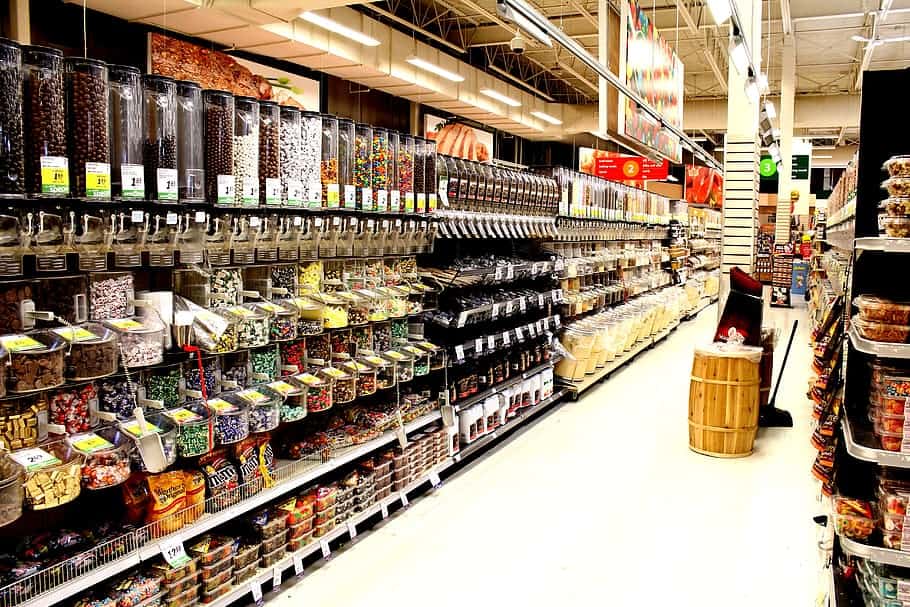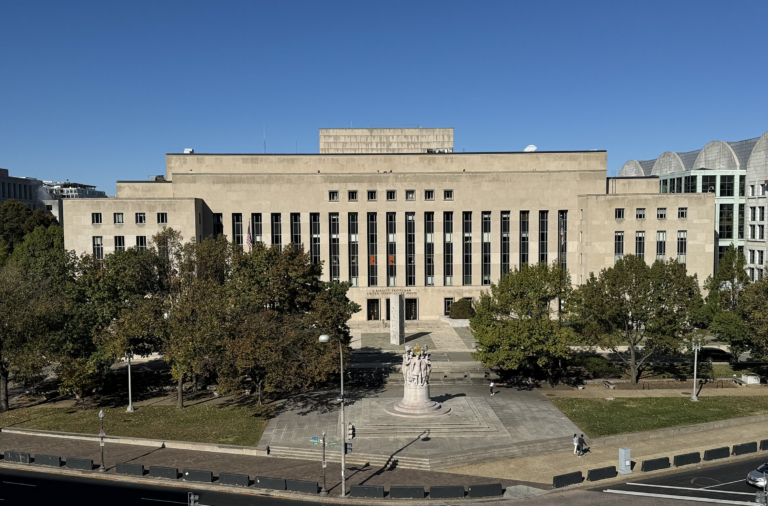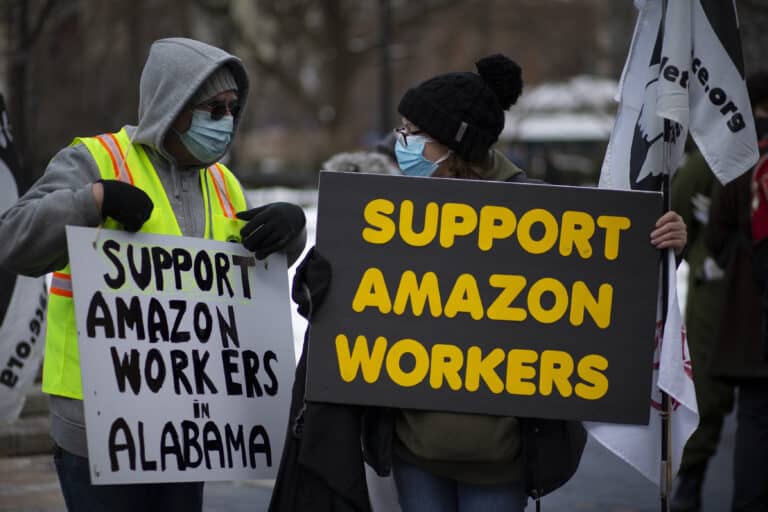
Courtney Brunson is a student at Harvard Law School and member of the Harvard Legal Aid Bureau.

Jon Levitan is a student at Harvard Law School and a member of the Labor and Employment Lab.
As more people shelter in place to avoid the widening impact of the coronavirus pandemic in the United States, workers at Instacart, a popular grocery delivery service that employs over 150,000 workers, went on strike yesterday. On March 27th, the workers, in collaboration with the Gig Workers Collective, announced an indefinite strike. The Instacart workers issued the following demands: the provision of personal protective equipment (PPE), hazard pay of an extra $5 per order, an increase in the default tip amount from 5% to 10% for every order, greater increases in pay for those impacted by the coronavirus (workers who cannot work because they have a preexisting condition that’s a known risk factor or require a self-quarantine), and extensions for those workers who are eligible for the pay increases beyond the original April 8th deadline.
As of Monday evening, Instacart was claiming that the strike had no impact on its operations. But one of the organizers tweeted that at around 1 pm Pacific Time, there were no same day delivery windows available. The Washington Post backed up the organizer’s assertion, saying that it was a challenge to find a delivery time. This strike is only the most recent instance in which Instacart has been in the public eye for their failure to provide their workers with adequate pay and benefits. According to a report released in 2017, Instacart paid millions of dollars to settle lawsuits regarding their inadequate treatment of their workers.
Following the strike announcement, Instacart followed up on the same day to state that they were extending the coronavirus pay eligibility another month and would provide certain shoppers with bonus payments and promotions. In response to the company’s statement, Vanessa Bain, a veteran shopper who helped organized the strike said the statement was “so tragically predictable” and that the “[w]alk-off is still on” because though Instacart met one of the four demands, “it’s the least meaningful, because workers can’t actually access the sick pay.”
The company released another statement on Sunday, March 29th, that said the company planned on shipping PPE to in-store shoppers in the next week and would set a new tip default setting that reflected the customer’s previous tip selection. The striking workers responded by the strike would go on because the new tipping system is insufficient and the issuance of PPE shows that the company can change its behavior in response to collective action. The company has still not responded to demand surrounding hazard pay and sick pay for workers.
As Deborah wrote about yesterday, workplace safety has become an increasingly urgent issue for workers and the public amid the coronavirus pandemic. Much of the focus has understandably been on healthcare workers and the staggering shortage of PPE in hospitals and medical facilities. However, the lack of PPE for Instacart workers is a crisis in its own right. These workers spend much of their day in grocery stores, one of the few remaining places where people still congregate in relatively close quarters. To complete their job, they must touch dozens of surfaces: shopping carts, produce, dry goods, credit card machines at the register, and more. As a result, the lack of PPE for Instacart workers puts themselves, and their customers, at an unacceptably high risk of contracting the coronavirus.
If grocery delivery services like Instacart are going to become a main source of food for Americans, keeping these workers safe is a matter of grave public health concern. This is especially the case as the company aims to double its workforce in response to a surge in demand for its services. Deborah pointed out that the federal government, specifically the Occupational Safety and Health Administration, is failing to protect workers – and is therefore failing to protect the public. Therefore, it should be unsurprising that workers have turned to collective action to protect themselves.
Though this strike most immediately aims to address urgent workplace safety issues, there’s something more structural at play. Workers are recognizing their own power and importance in keeping our country afloat, and leveraging that power to demand more respect, better working conditions, and higher pay. Workers at grocery stores, distribution warehouses, and delivery workers, may have formerly been considered “unskilled.” It’s now clear that they are “essential.” Instacart itself has even referred to its workers as “household heroes.” But workers have been quick to notice the enormous gap between the words affirming their importance and their material conditions. Instacart worker Sarah Polito told NPR: “[a]ctions speak louder than words…[Instacart] can tell us that we’re these household heroes and that you appreciate us. But you’re not actually, they’re not showing it. They’re not taking these steps to give us the precautions. They’re not giving us hazard pay.”
The Instacart strike may be the largest strike concerning pandemic working conditions, but it is not an isolated incident. As Mackenzie touched on yesterday, around 50 workers walked off the job at an Amazon warehouse in Staten Island in protest of what they say is the retail giant’s inability to adequately protect them at work. A number of workers at the warehouse have tested positive for coronavirus, and the remaining employees have urged the company to close the facility for comprehensive sanitation, while giving them paid time off. Last night, Amazon fired Chris Smalls, one of the organizers of the protest. The company claimed it fired Smalls for violating social-distancing rules and failing to abide by a quarantine. Smalls said he fired “[b]ecause I tried to stand up for something that’s right, [so] the company decided to retaliate against me.” New York Attorney General Letitia James called the firing “immoral and inhumane,” and called on the National Labor Relations Board to investigate.
Amazon-owned Whole Foods announced a $2 raise for full and part time employees, a doubled base rate for overtime hours between March 16 and May 3, updated social distancing guidelines, and increased hand sanitizer stations. However, after two Whole Foods stores failed to close after employees tested positive for coronavirus, a group of employees called Whole Worker decided to stage a nationwide sick-out starting today. The workers have demanded paid sick leave, healthcare for part-time and seasonal workers, hazard pay that amounts to double the normal wage, new social distancing policies, and the immediate closure of any store where a worker tests positive for the virus.
Yet workers have not always had to resort to strikes to win additional pay and benefits amid the pandemic. As Courtney mentioned last week, Washington state’s grocery worker unions successfully fought for more paid time off, flexible scheduling, and several other benefits, which were also expanded to United Food and Commercial Workers members across the nation. The grocery stores, Safeway and Kroger, also announced that they would be providing hazard pay to its employees. Kroger’s hazard pay would be paid in early April and amount to $150 for part time workers and $300 for full time workers.
This much is clear: In a time of public health and economic crisis, workers are increasingly turning to collective action to advocate for basic safety protections and adequate wages, even when it places them up against extremely powerful employers.










Daily News & Commentary
Start your day with our roundup of the latest labor developments. See all
July 11
Regional director orders election without Board quorum; 9th Circuit pauses injunction on Executive Order; Driverless car legislation in Massachusetts
July 10
Wisconsin Supreme Court holds UW Health nurses are not covered by Wisconsin’s Labor Peace Act; a district judge denies the request to stay an injunction pending appeal; the NFLPA appeals an arbitration decision.
July 9
In Today’s News and Commentary, the Supreme Court green-lights mass firings of federal workers, the Agricultural Secretary suggests Medicaid recipients can replace deported farm workers, and DHS ends Temporary Protected Status for Hondurans and Nicaraguans. In an 8-1 emergency docket decision released yesterday afternoon, the Supreme Court lifted an injunction by U.S. District Judge Susan […]
July 8
In today’s news and commentary, Apple wins at the Fifth Circuit against the NLRB, Florida enacts a noncompete-friendly law, and complications with the No Tax on Tips in the Big Beautiful Bill. Apple won an appeal overturning a National Labor Relations Board (NLRB) decision that the company violated labor law by coercively questioning an employee […]
July 7
LA economy deals with fallout from ICE raids; a new appeal challenges the NCAA antitrust settlement; and the EPA places dissenting employees on leave.
July 6
Municipal workers in Philadelphia continue to strike; Zohran Mamdani collects union endorsements; UFCW grocery workers in California and Colorado reach tentative agreements.